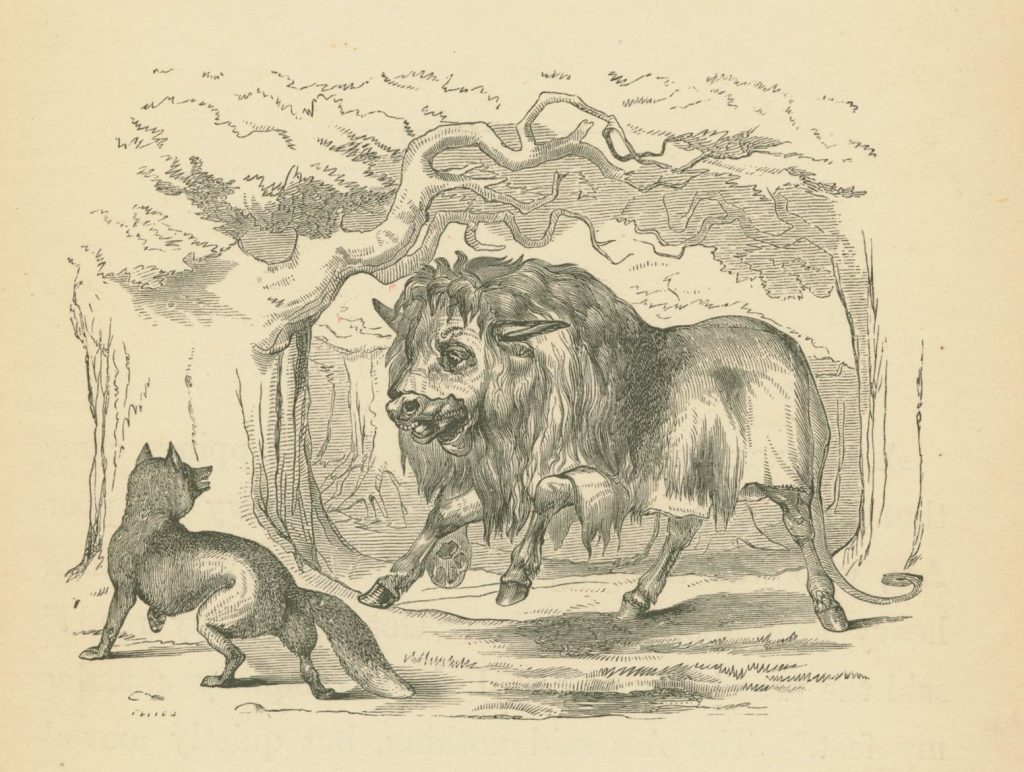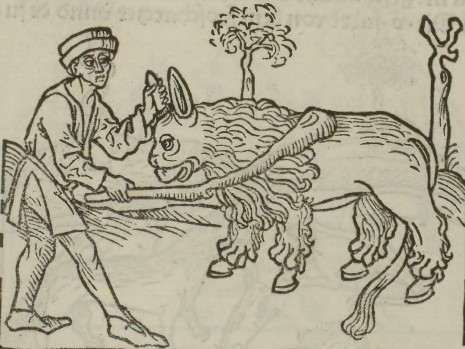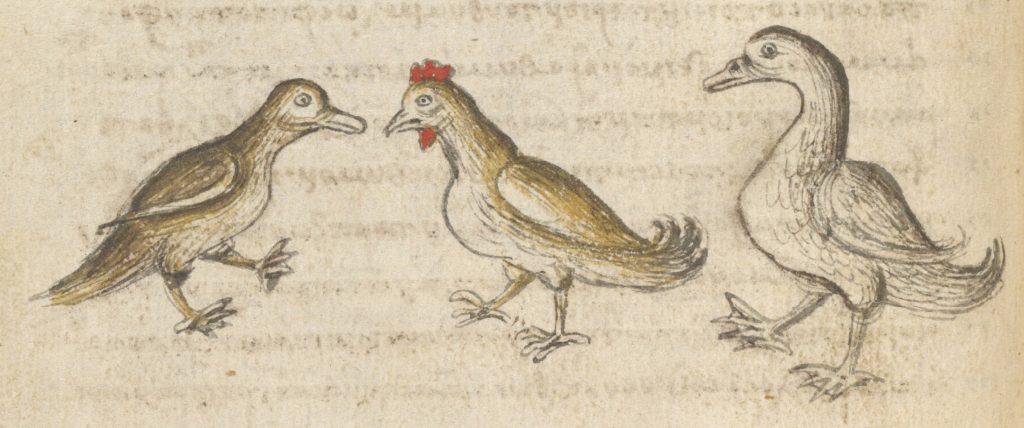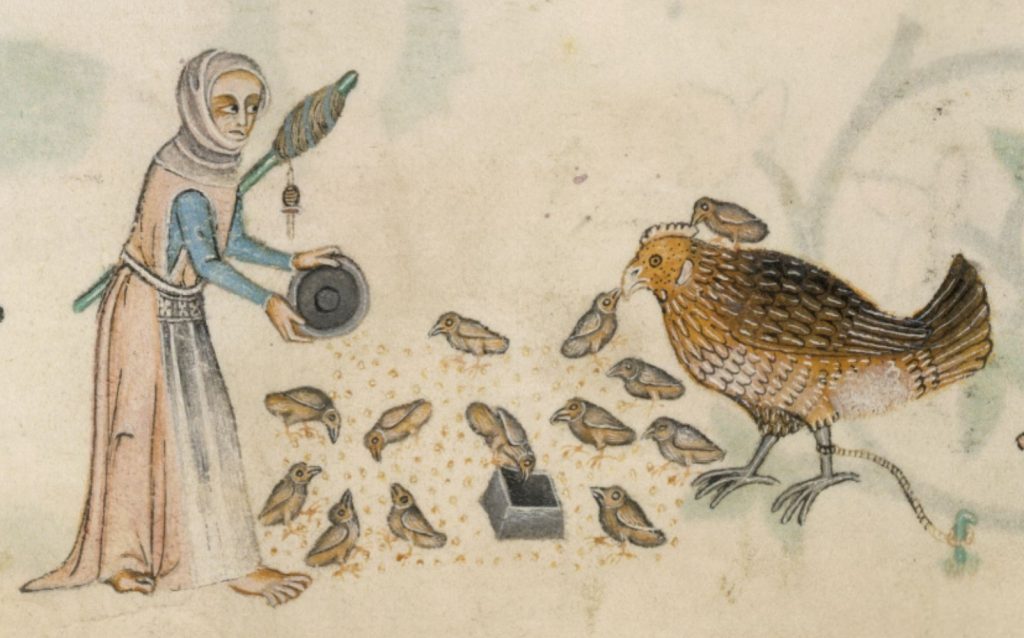Fishing is a huge industry worldwide; every year about 1 to 2 trillion wild fish are caught, representing vastly more animal deaths than the annual slaughter of terrestrial vertebrates such as cows and chickens. Overfishing is a serious crisis. According to the UN’s Food and Agriculture Organization (FAO), in 2024, about 37% of monitored fish stocks across the globe were overfished. Additionally, a 2018 FAO report indicated that nearly 60% of fish stocks were “maximally sustainably fished,” meaning that these fish populations were being exploited to the very edge of sustainability.1 Regulations and guidelines aim to reduce “illegal, unreported and unregulated” (IUU) fishing, in order to mitigate the devastating effects of overfishing and maintain populations of these animals for future human use, but IUU fishing is still extremely widespread in practice.

Below, I translate and discuss a medieval fable, that of The Fisherman and the Fish (Perry Index 18). The Fisherman and the Fish has a decidedly anti-conservationist bent. It depicts an individual fisherman who is angling (fishing with a line), seemingly for his own table rather than for recreation or profit. Though the man’s catch is given a speech, the fisherman gets the last word, saying that the more prudent thing is to kill and eat even a small fish that one has already caught, rather than to hold out for a larger one that may or may not come. Though the fable suggests we are meant to agree with the man’s judgment, I find the fish’s plea to the fisherman—one of many examples in fable where a vulnerable character begs a more powerful one for their life—quite affecting.
This version of The Fisherman and the Fish is by Avianus (ca. 400 CE); it is preceded by a Greek version by Babrius.2 I provide a Latin text of Avianus, and an English translation, below.
De piscatore et pisce
Piscator solitus praedam suspendere saeta
exigui piscis vile trahebat onus.
sed postquam superas captum perduxit ad auras
atque avido fixum vulnus ab ore tulit,
“parce, precor” supplex lacrimis ita dixit obortis;
“nam quanta ex nostro corpore dona feres?
nunc me saxosis genetrix fecunda sub antris
fudit et in propriis ludere iussit aquis.
tolle minas, tenerumque tuis sine crescere mensis:
haec tibi me rursum litoris ora dabit:
protinus immensi depastus caerula ponti
pinguior ad calamum sponte recurro tuum.”
ille nefas captum referens absolvere piscem,
difficiles queritur casibus esse vices:
“nam miserum est” inquit “praesentem amittere praedam,
stultius et rursum vota futura sequi.”3
The Fisherman and the Fish
A fisherman, who was accustomed to catch his prey hanging on a line,
drew up a little fish of paltry weight.
But after he had brought up the captive into the air above,
and a wound pierced through its hungry mouth,
the pleading fish said, “Spare me, please,” with tears springing up,
“for how much benefit will you get from my body?
Just now a fertile mother has spawned me under stony grottoes,
and told me to play in our own waters.
Remove these threats; I am young, let me grow up for your table.
This edge of the shore will give me to you again.
Soon, when I have fed on the depths of the vast sea,
I will come back fatter to your rod, of my own accord.”
The fisherman, replying that it would be a sin to set the caught fish free,
laments the hard conditions of fortune:
“It’s a shame,” he said, “to let go of the prey in hand,
and even more foolish to pursue future wishes again.”
The fish’s plea makes both an appeal to reason and an appeal to emotion. He reasons that his meager body is now of little worth as food, and that in time, once he has grown, he will make a better meal. He further suggests a sort of bargain: he will return “willingly” (sponte) to the fisherman when he is a well-grown adult.
As for emotion, the little fish, in his abject entreaty, describes himself rather pathetically. The fish having been spawned“just now” (nunc) implies that he is very young and small indeed. Anthropomorphic touches, such as the fish’s tears, and the detail that his mother has told her children to “play” (ludere) in the waters, could prompt readers’ sympathy for the creature. The prospect of a playful “child-fish” having his life cut suddenly short is a pitiful one.
In terms of natural history, the premise of the fable—at least according to the fish’s speech—is that the fish is small (and of little worth to humans nutritionally or economically), but only because he is a very young member of a species that grows considerably larger. While the fish was spawned in “just now” (nunc), “under stony grottoes,” (sub antris saxosis), his life cycle entails feeding and growing in the sea, then returning once again to the same place, where he could perhaps be caught once more by the same fisherman. The word litoris in line 10 can mean the beach or sea shore, but it could also refer to a river bank.4 If one interprets it as the latter, the fish could be of an anadromous species (i.e., a type of fish which spends its adult life in the sea but returns to rivers or streams in order to spawn; examples of anadromous fish include salmon, sturgeon, and some smelt. Babrius’s version takes place at the sea shore). Avianus’s version of the fable doesn’t specify what kind of fish this is, only that he is currently a juvenile. Later versions deem the fish a flatfish or turbot (rombus)5 or pickerel (smaris).6

Intriguingly, in a version of the fable found in the fourteenth-century Dialogus creaturarum, the little fish promises to bring the man a whole school of other piscine victims with him when he returns. In this version, the fish also persuades the man to cut off part of his tail, so that he can be identified when he comes back. The fish reneges on his promise to bring others along with him, and is killed by the man when he is caught for the second time.7
The moral of The Fisherman and the Fish runs rather contrary to the morals of some others (which is often the case in such a heterogeneous and adaptable genre). For example, in the fable of The Goose with the Golden Eggs, which I posted about a few months ago, the moral is to not be greedy and hasty, and, I argued, perhaps not to push nature past sustainable limits. In The Fisherman and the Fish, by contrast, the choice endorsed is to kill an animal as soon as the opportunity presents itself, regardless of whether this is an optimal use of natural resources (i.e., achieving “maximum yield”), because the future is unpredictable.
Fables often focus on interactions between individuals of different species, rather than commenting on species as collectives or populations (though there are exceptions, e.g., The Hares and the Frogs, The Frogs Asking for a King). The fable of The Fisherman and the Fish, too, represents a single encounter between two individuals. However, perhaps we can see this fable as a kind of microcosm of relationships between humans and wild fish. Fishing is essentially the last bastion of wild-caught food, for the majority of humanity, and, as mentioned above, we are exploiting these animals to their limits and beyond. Considering this fable versus The Goose with the Golden Eggs, this fable may speak to a harsher and more opportunistic approach to exploiting “wild” natural resources, compared to exploiting domestic animals and crops. Domestic animals and crops require the expenditure of human labor to raise or cultivate, for one thing, which may make them seem like more of an investment; perhaps, too, animal slaughter or crop harvesting is also viewed as more reliable, more under human control, than the outcome of a fishing or hunting expedition.
Though overfishing has increased significantly in the last several decades, the genesis of unsustainable practices can be found in the medieval period, argues Richard C. Hoffmann. “By the end of the Middle Ages, essential elements for present-day global fishery crises were in place in European waters…. Overexploitation, habitat destruction, selective predation on large or prestigious species, and human competition without regard for the resource were all part of medieval experience.”8 While The Fisherman and the Fish is a brief text and a small example, compared to Hoffmann’s sweeping environmental history, I think this fable can nevertheless be seen in light of medieval (and post-medieval) beliefs and practices regarding fish as natural resources.
Linnet Heald
PhD in Medieval Studies
University of Notre Dame
- Food and Agriculture Organization of the United Nations, The State of World Fisheries and Aquaculture 2018, p. 12. ↩︎
- Ben Edwin Perry, ed. and trans., Babrius and Phaedrus: Fables, Loeb Classical Library 436 (Harvard University Press, 1965), pp. 10–13. ↩︎
- Latin text from J. Wright Duff and A. M. Duff, eds., Minor Latin Poets, Volume II, Loeb Classical Library (Harvard University Press, 1934), p. 712. English translation is my own. ↩︎
- Charlton T. Lewis and Charles Short, A Latin Dictionary (Clarendon Press, 1879), s.v. “lītus.” ↩︎
- Charlton T. Lewis and Charles Short, A Latin Dictionary (Clarendon Press, 1879), s.v. “rhombus.” ↩︎
- Lewis and Short’s Latin dictionary defines smaris as “a small sea-fish of inferior quality.” Taxonomist Carl Linnaeus, in the mid-18th century, used smaris as the species name for a particular fish, the deep-body pickerel (Sparus smaris, now called Spicara smaris). ↩︎
- Francisco Rodríguez Adrados, The History of the Graeco-Latin Fable (Brill, 2003), vol. 3, p. 747. ↩︎
- Richard C. Hoffmann, The Catch: An Environmental History of Medieval European Fisheries (Cambridge University Press, 2023), p. 413. ↩︎





